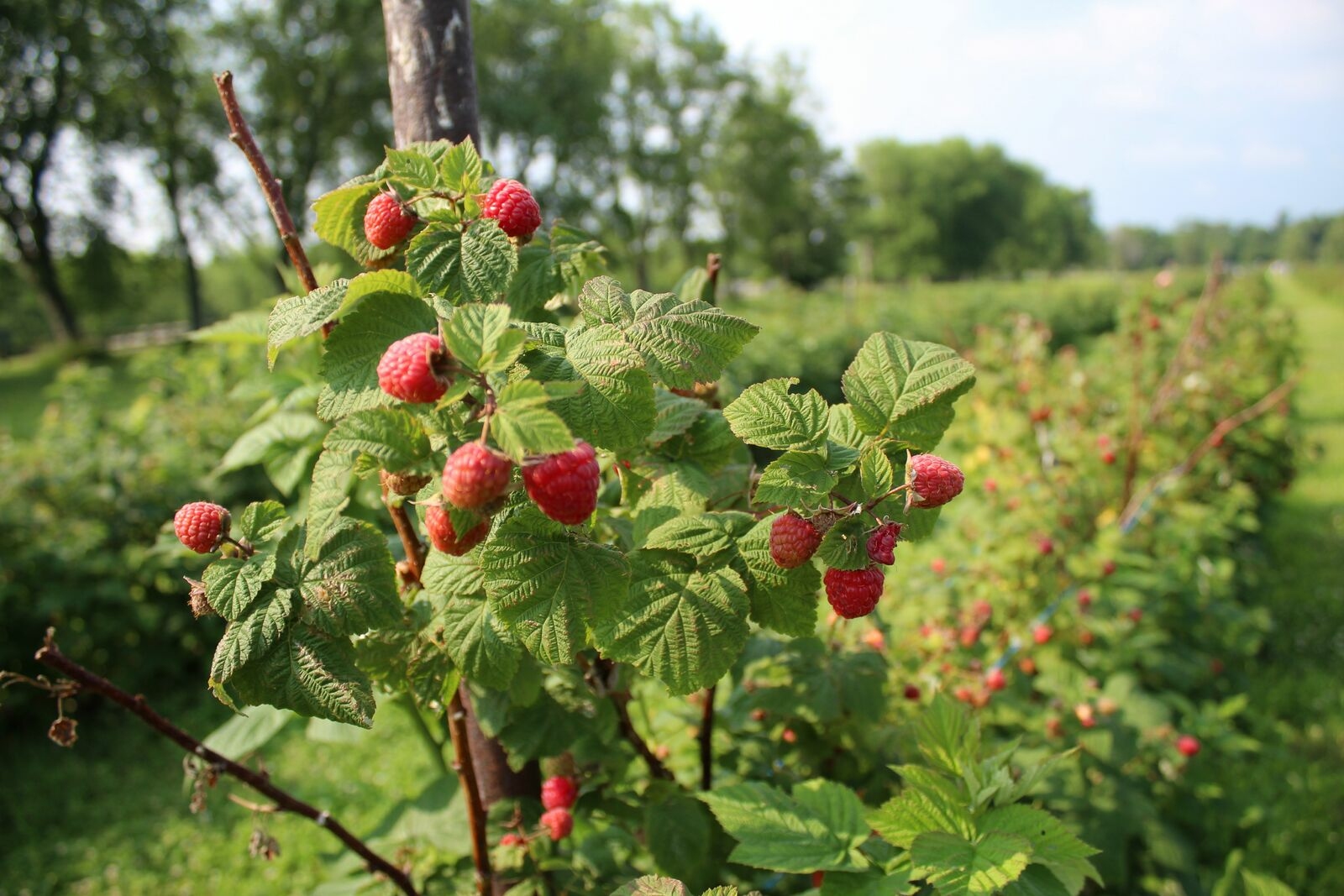
Pruning Raspberries: How to Do It
Pruning raspberries correctly every year is important so that you can continue to enjoy your raspberries and, above all, have a good harvest. That's why we explain how to prune raspberries correctly in this article. It covers everything from summer, fall and double-bearing raspberry varieties.
This Article Contains:
- Cutting Back Raspberries: The Right Time
- Prune Raspberries Correctly: What You Should Keep In Mind
- Cutting Summer Raspberries
- Pruning Autumn Raspberries
- Cut 2X Bearing Raspberries (e.g. Sugana Two-Timer Raspberries)
- Forgetting to Cut Raspberries: Do You Have to Cut Raspberries?
- Pruning Raspberry Bushes for Healthy Raspberries
- Frequently Asked Questions About Cutting Raspberries
Quick Overview
Pruning Raspberry Bushes: When & How to Prune Raspberries?
- Summer raspberries: After the harvest in August, old, harvested canes are cut off close to the ground; in spring, young canes can be thinned out again and cut back if they are too long. Leave 7 - 10 new shoots per m/1.1 yd.
- Autumn raspberries: All shoots are cut off close to the ground in late fall, but before the first frosts, as soon as all leaves have fallen, or in spring (February/March). Leave approx. 20 young canes per meter.
- 2x bearing raspberries: Prune in spring; cut off approx. 1/3 of the biennial shoots close to the ground, only shorten the remaining shoots (the part that bore fruit the previous year), shoots that have just borne fruit can also be cut off close to the ground at the end of July/August.
- Generally speaking, canes that are too dense, diseased or weak should be removed. Sick canes are also cut off during the season to prevent the spread of disease or pests.
Cutting Back Raspberries: The Right Time
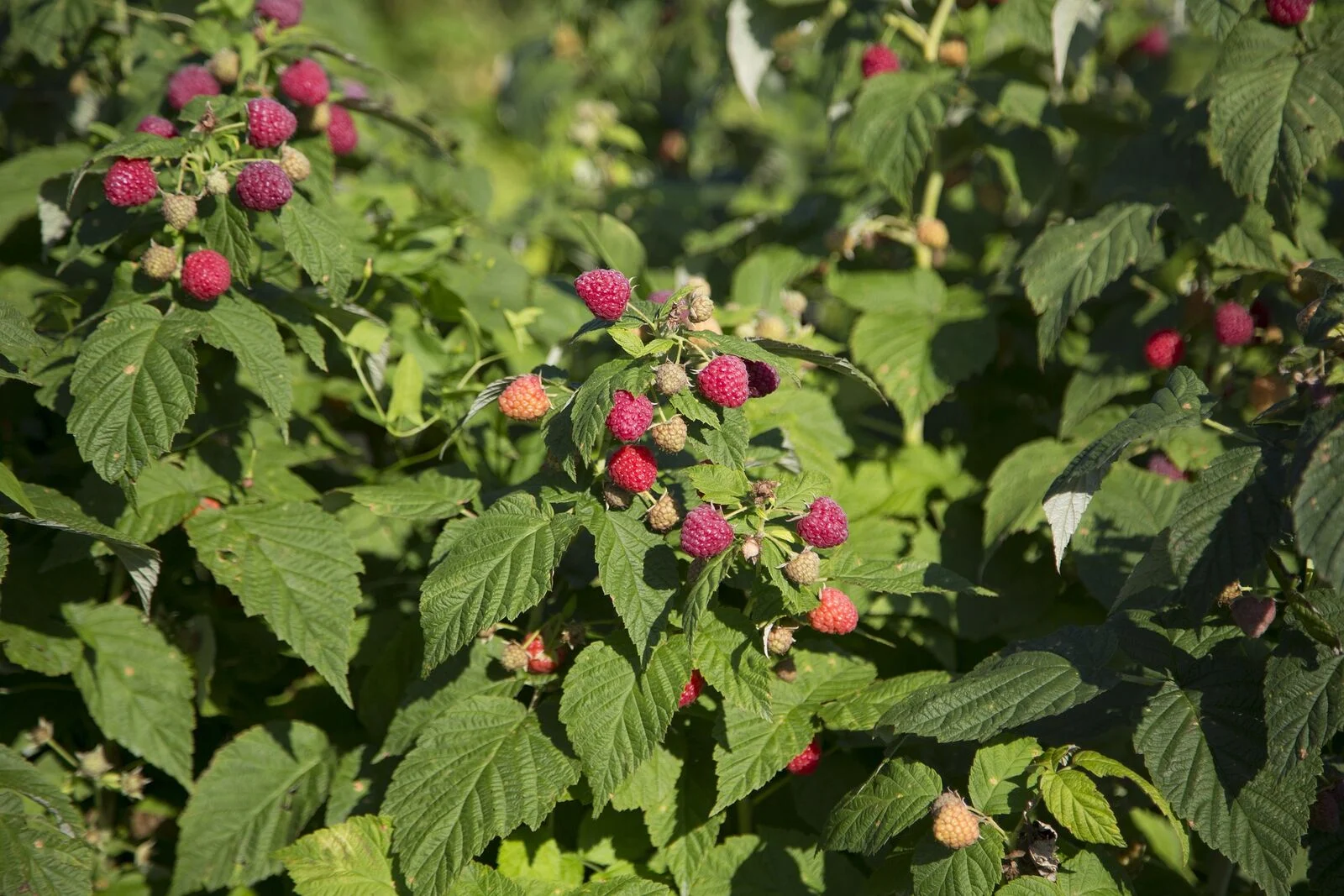
To ensure that your raspberries produce a rich harvest every year, you should prune them once a year. However, pruning is not only important for a good harvest, but also to prevent diseases on your raspberries. We explain below when the right time to prune is.
When to Cut Raspberries?
To determine the right time to prune raspberries, it is important to know which variety of raspberry you are dealing with. There are summer, fall and double-bearing raspberry varieties that bear fruit at different times and on canes of different ages. This has an impact on the best time for pruning and which canes should be shortened and when. You can find out which raspberry varieties there are and how to grow them in your garden in our article Planting Raspberries: Location, Cultivation & Neighbors.
Pruning Raspberries in the Fall
The old canes of summer raspberries that have borne fruit this year are best cut off close to the ground immediately after harvesting in August. They are worn out and should be removed, as they take away the plant's strength, which it would otherwise put into the formation of new canes and fruit.
Autumn raspberries can be pruned in late fall, but before winter, as soon as they have lost their leaves.
Pruning Raspberries in Spring
However, as autumn raspberries can sometimes bear fruit until the end of October, depending on the variety, you may prefer to prune them in February and March. Otherwise, you will deprive your raspberry plants of the strength and energy they need to survive the winter.
In spring, as soon as the last frosts have passed, a second, smaller pruning is carried out on summer raspberries. The young canes are thinned out and possibly shortened if they are a little too long.
In spring, the old, worn canes of double-bearing raspberries are pruned and any canes that are too dense are thinned out to provide more vigor and better aeration.
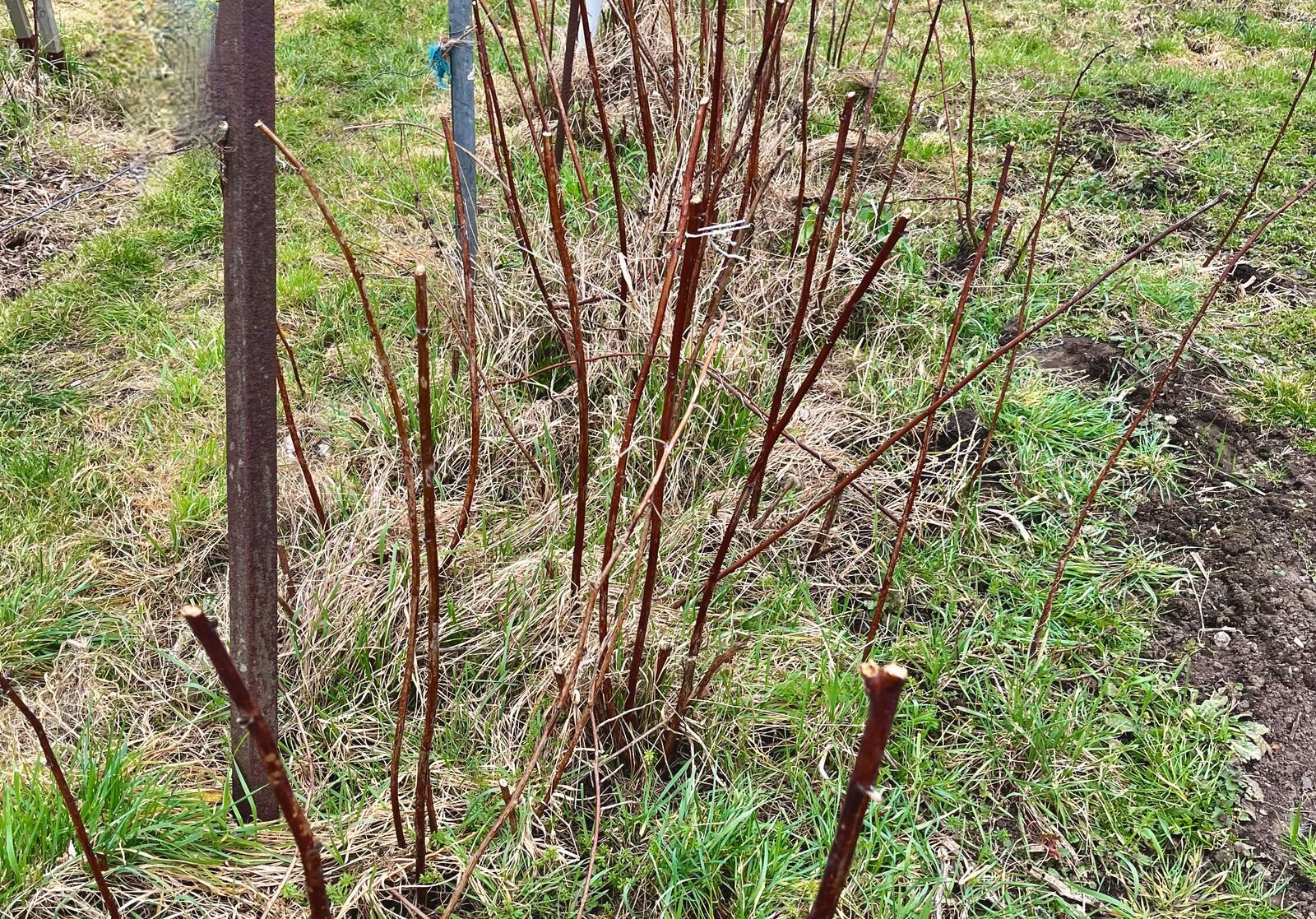
Prune Raspberries Correctly: What You Should Keep In Mind
There are a few things to bear in mind when pruning raspberries. When pruning and thinning, it is important to cut the canes close to the ground. This prevents the transmission of diseases. Weak canes should also be cut off when pruning so that only the strongest canes remain. In general, the more canes there are on your raspberry bush, the later the bush will bear fruit. Ideally, you should also know which raspberry variety you have in your bed. Summer and autumn raspberries bear fruit on canes of different ages. You can find out how to tell the different raspberry varieties apart in the next section.

Want to Learn More?
In our library you will find information on the individual varieties with cultivation periods, tips on planting and harvesting. You will also find good and bad companion plants to help you plan a mixed crop.
View Library NowRaspberry Varieties: An Overview
In contrast to summer raspberries, which can grow up to 2.5 m/2.7 yd tall, autumn raspberries are usually only 1.5 m/1.6 yd tall. While summer raspberries form their fruits on the biennial canes as early as June and July, autumn raspberries bear their berries on the annual canes between August and November. You can recognize the different shoots of summer and autumn raspberries by the fact that the young shoots of summer raspberries grow in the first year but do not produce flowers. The shoots of autumn raspberries, however, already bear flowers and fruit in the first year.
If you are not sure which type of raspberry you are dealing with, prune your raspberries as if they were summer raspberries. In general, you should therefore prune all shoots that have already borne fruit. This will give you at least one summer harvest next year. If your raspberries then bear fruit again in the fall, you know that they are fall raspberries.
Cutting Summer Raspberries
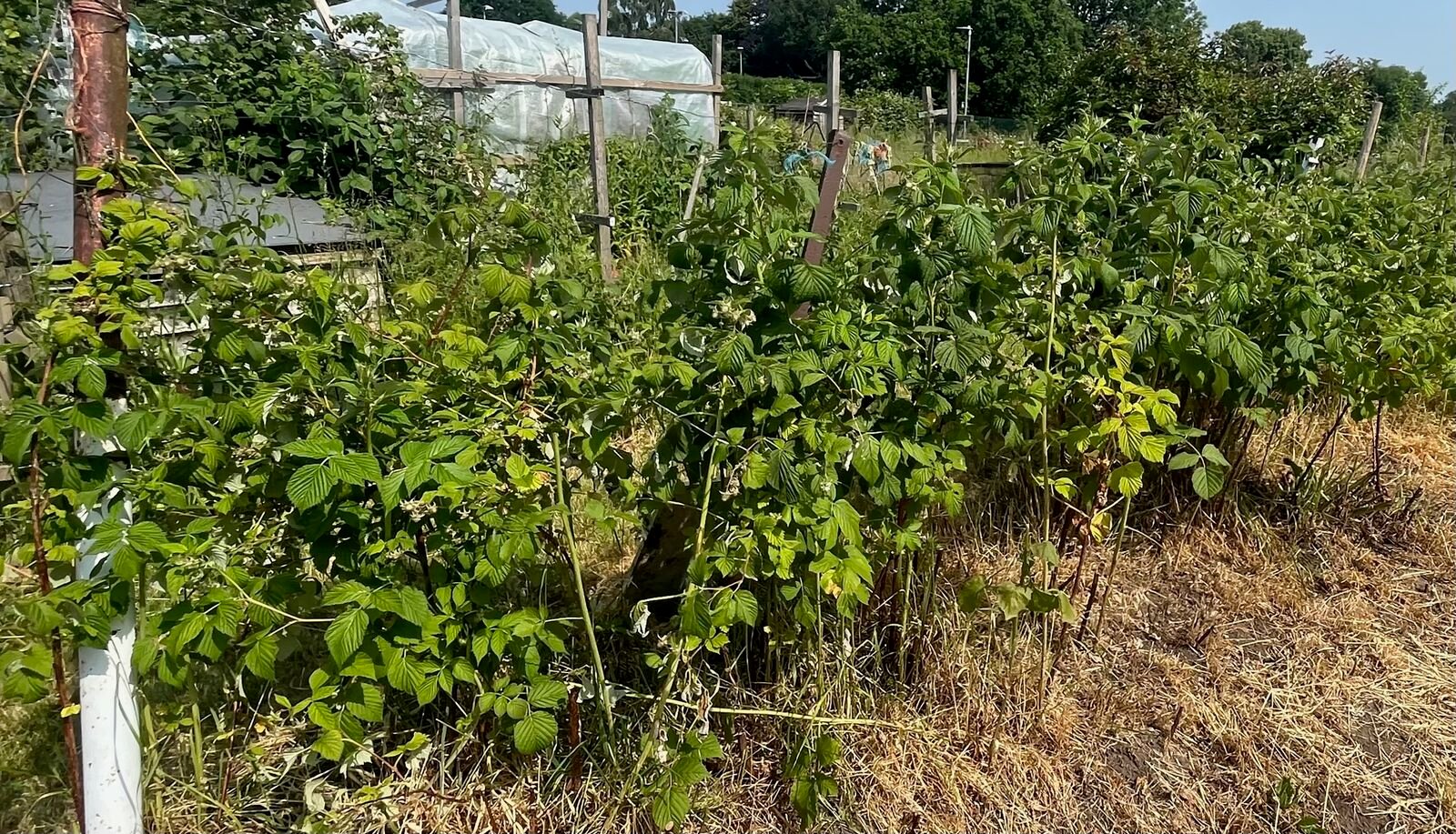
While the biennial shoots of summer raspberries form the fruit, the new, green, annual shoots grow for next year's harvest. Therefore, you must never cut off the annual shoots when pruning after the harvest. Otherwise your harvest will fail the following year. The old, brownish, two-year-old sh oots that have just produced the harvest, on the other hand, are cut off close to the ground in around August. If your raspberries are still quite young, you can be a little more careful when harvesting. If present, you can leave a few buds that are close to the ground and cut your raspberries back to around 5 - 10 cm/2 - 4 in.
Thinning Pruning for Your Summer Raspberries in Spring
At the same time as pruning the old canes (i.e. in August after the harvest) or in spring (end of February/beginning of March), thinning and pruning can be carried out. Around 7 - 10 shoots per running m/1.1 yd are sufficient for a good harvest. This increases the yield and fruit size, as the plant can put its strength into the remaining shoots. It is best to choose strong shoots that are not too close together and that grow in different directions. All other shoots, especially weak or diseased shoots, are shortened close to the ground.
Further pruning can also be carried outbetween March and May if necessary: summer raspberries can form canes up to 2.5 m/2.7 yd long. To prevent the canes from growing over your head and to keep them healthy, you can prune the canes back to around 1.5 m/1.6 yd during this time. Side shoots can also be cut back to 1 - 2 buds.
If your summer raspberries have already produced their first shoots in April and May, but there is another late frost, it is best to cut off these fresh young shoots. Otherwise, these shoots will most likely die in winter and your harvest will fail the following year.
Pruning Autumn Raspberries
Autumn raspberries are somewhat easier to prune than summer raspberries. Either after harvesting in the fall, but before the first frost as soon as the leaves have fallen, or preferably in the spring (end of February to mid-March), simply cut off all the shoots of your autumn raspberries close to the ground. Autumn raspberries bear their fruit on the annual canes. This means you don't have to pay attention to the age of your canes and can simply cut off all the shoots.
To extend the harvest period of your autumn raspberries, you can also leave a few canes about 20 - 30 cm/7.9 - 11.8 in high. Like summer raspberries, these already bear a few first raspberries in June and July. However, the more canes you leave standing, the smaller the fall harvest of your raspberries will be later on. This is also the principle behind two-timer raspberries.
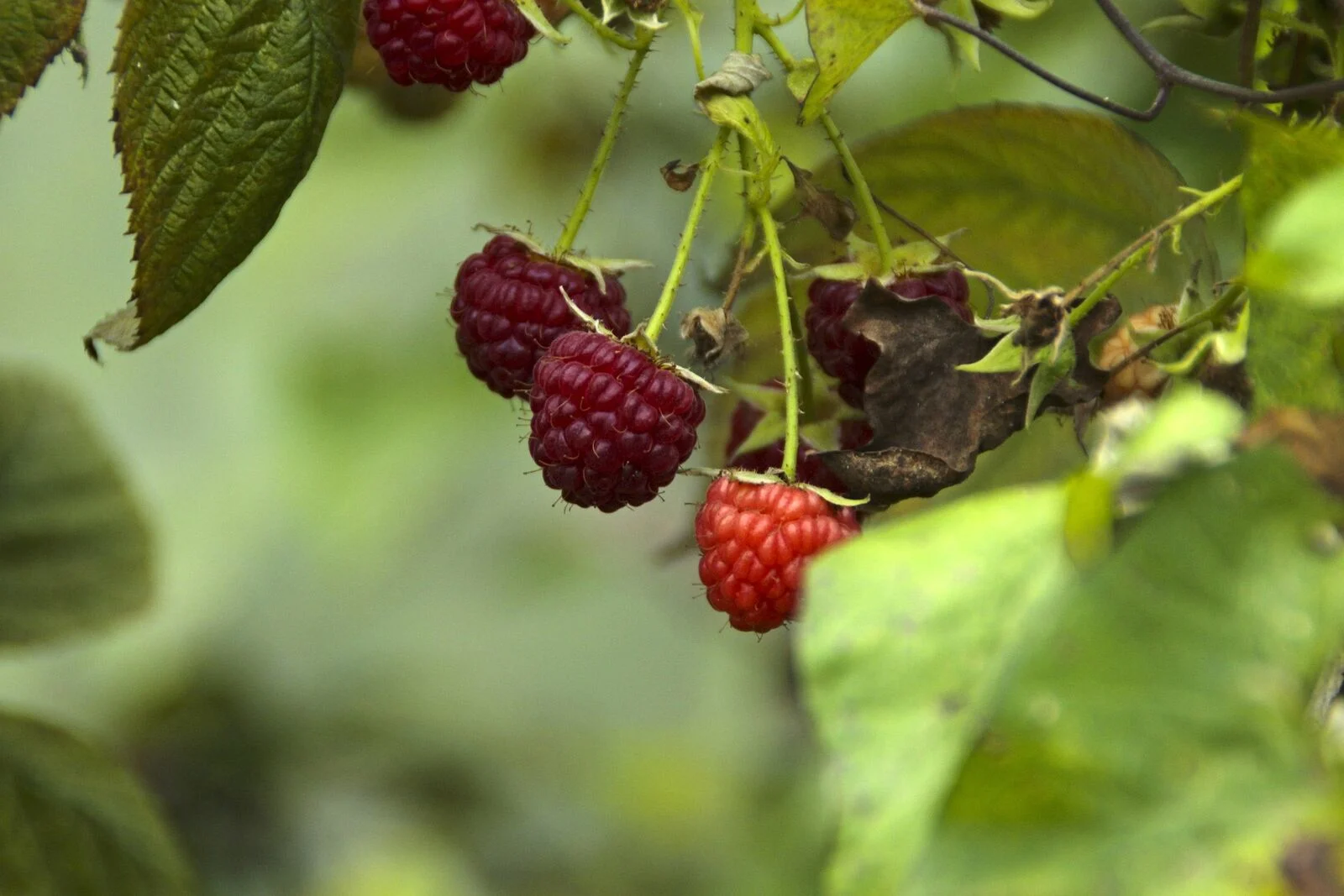
Cut 2X Bearing Raspberries (e.g. Sugana Two-Timer Raspberries)
Double-bearing raspberries, e.g. the Sugana Two-Timer variety, bear fruit twice a season. They are pruned once in spring (end of February to mid-March). Then the two-year-old shoots that bore fruit the previous year are cut off close to the ground(about a third) and the remaining shoots are only shortened slightly (the part that bore fruit the previous year). At the end of July/August, shoots that have just borne fruit can also be cut off close to the ground. Raspberries that bear fruit twice are a kind of mixture of summer and fall raspberries. After pruning in spring, the biennial canes that were left standing will produce fruit again in June/July, while the new annual canes will already produce fruit on their uppermost part in August. However, if all the biennial canes have been left standing, the plant no longer has enough strength for a good second harvest in August. Canes that are too dense should also be thinned out to ensure good ventilation and light.
Forgetting to Cut Raspberries: Do You Have to Cut Raspberries?
If you forgot to prune your raspberries last year or in spring this year, it's not too bad at first. However, your harvest may be smaller this year. However, your plant will recover after the next pruning, which you carry out as planned. If there are any diseased or damaged shoots on your plant, you should cut them off as soon as possible. This will prevent diseases from spreading and ensure that the plant retains enough strength to grow.
Raspberries Too Long?
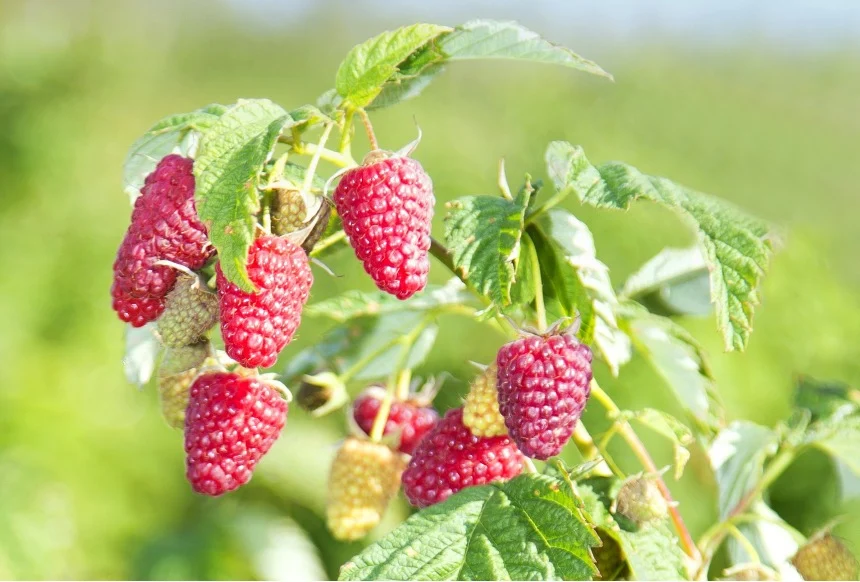
The canes of summer raspberries in particular can grow taller than 2 m/2.2 yd. These are then cut off in late fall, but preferably in spring (February/March, possibly until May) of the following year a few centimeters above the climbing support, to about 1.5 m/1.6 yd. This will give the shoot more strength and stimulate bud formation. However, the young canes should not be pruned during the vegetation period, as this leads to branching and therefore less vigorous canes.
Pruning Raspberry Bushes for Healthy Raspberries
Pruning raspberries is recommended for several reasons. Pruning helps against:
- The spread of diseases and pests. Old, thick canes often have cracks in the bark, which can allow germs to penetrate and cause disease. If there are too many canes on a bush, fungal diseases can spread more easily as there is insufficient aeration.
- Spreading raspberry plants in your garden. If raspberries are not pruned, they will spread throughout your garden.
- Ensuring a good harvest. Thin, weak or old shoots rob your plant of strength, which it then cannot put into the formation of new shoots and fruit.
- Depending on how many shoots you leave standing, you can influence the ripening period of your raspberries. If there are more shoots on a plant, the fruit will ripen later.
Do Raspberries Have Brown or Yellow Leaves?
While diseased shoots should be cut off as quickly as possible, yellowish and brown leaves on raspberry plants are usually just a lack of nutrients. Above all, a lack of magnesium often occurs in raspberries. To prevent yellow leaves, you should therefore feed your raspberries once in autumn and/or spring with a fertilizer containing magnesium. You can prevent brown leaves by generally fertilizing with berry or tomato fertilizer. Proper fertilization helps to protect your plants from diseases. You can find out exactly how to fertilize and care for your raspberries correctly in our article Fertilizing, Caring for & Propagating Raspberries.
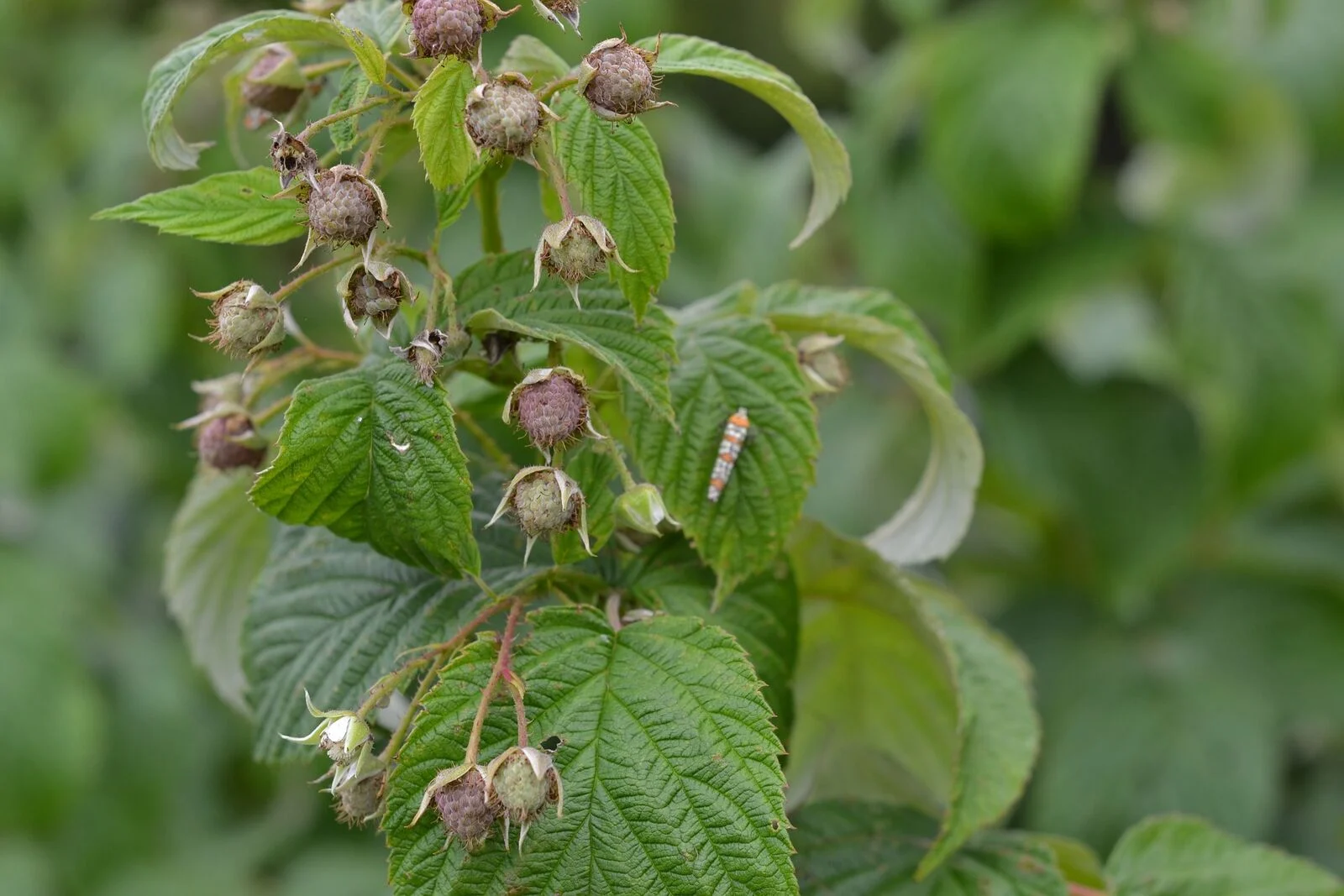
Avoid Diseases on Raspberry Plants
To avoid diseases on raspberry plants, you should cut off old canes after harvesting. This will give your plant more strength, making it more resistant to diseases and pests. You should also cut off shoots during the season if they are affected by frost, pests or diseases so that these do not spread to other parts of the plant and cost it additional strength. You should dispose of these shoots in organic waste rather than compost to prevent diseases and pests from spreading.
If you have any questions or comments, please write to us at [email protected]. Would you like to receive helpful gardening tips all year round and plan your own beds optimally? Then register here or download the Fryd app for Android or iOS.
Fryd - your digital bed planner
Photo by Noura Haddad on Unsplash.

Marielena
Marielena studies agricultural and environmental sciences. She gardens at home and at an allotment and likes to try out new things.
Learn MoreCurrent Topics in the Community

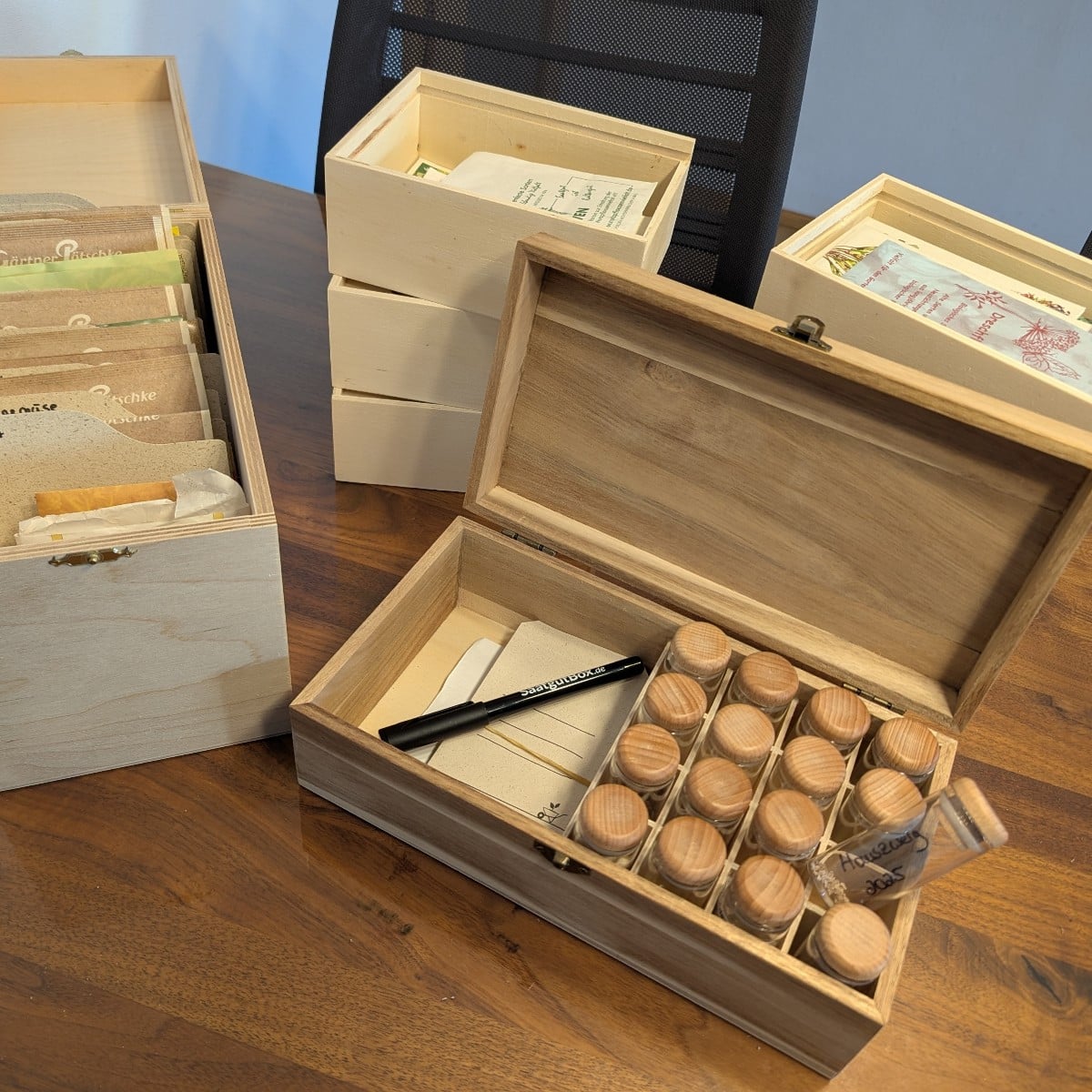
Liked 2 times
#gardeningstart2026 Finally, the initial chaos has been sorted out 😊
Show 1 answer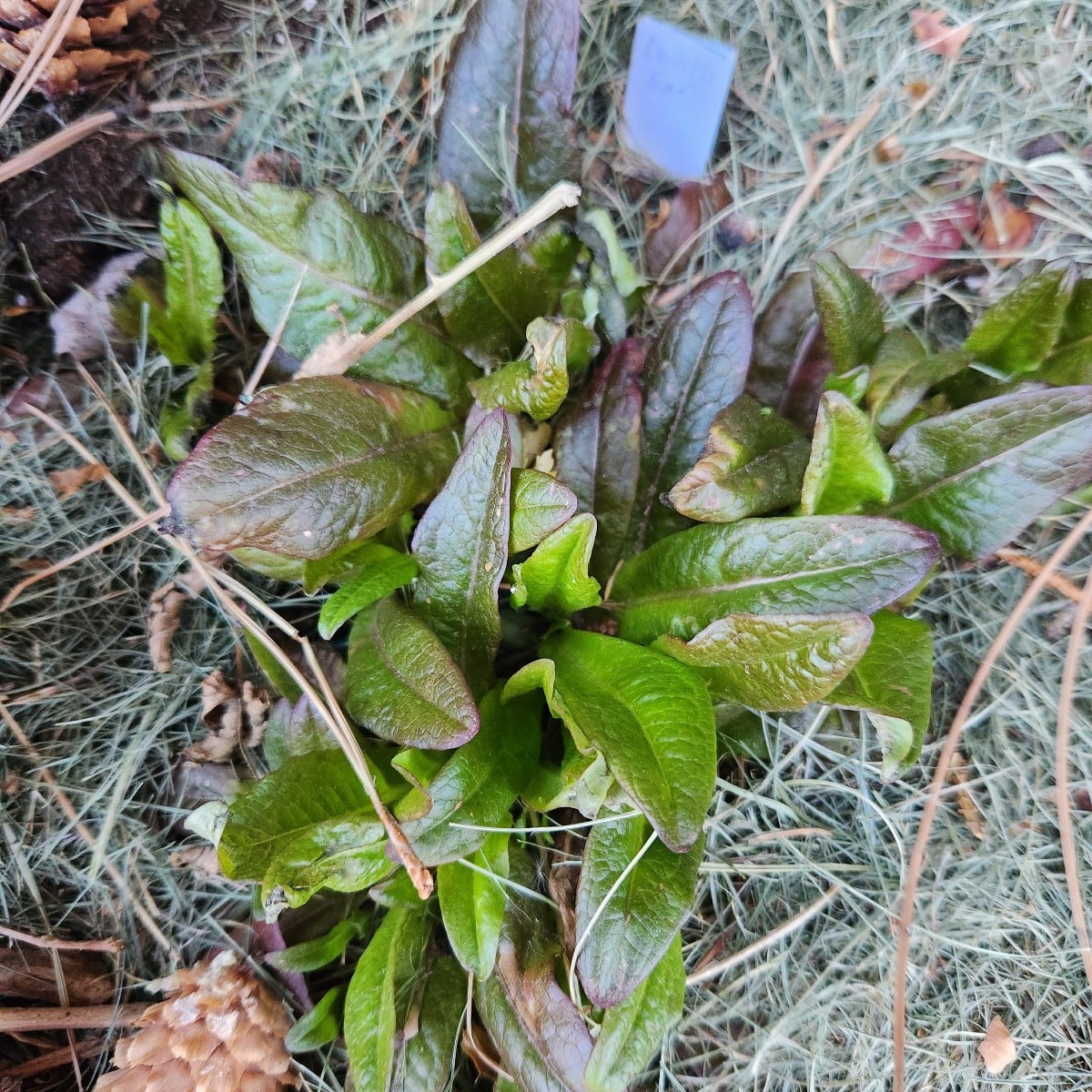
Liked 6 times
I don't remember who on here told me about Devil's Ear lettuce but THANK YOU! We have been down to -12C. I only cover when night temps are -6C or below.
Show 8 answers
Liked 16 times
New year—new gardening joy! What a mess! It started out small and organized :))! Things I bought, things I received as gifts, and things I made myself... I wish us all lots of fun and joy in gardening!
Show 2 answersPopular Articles

Overwintering Parsley: How to Do It Successfully

How to Grow Lettuce in Winter: Varieties, Sowing, Harvesting

Growing Sage Plant: Tips for Sowing and Harvesting

What Herbs Can Be Planted Together?

Create & Design a Permaculture Garden

Overwintering Plants: Tubs, Pots and Raised Beds

Pruning, Fertilizing & Propagating Currants: Care Tips

Pruning Raspberries: How to Do It

Vegetable Garden With Greenhouse: How to Use Greenhouse Effect

Winterizing Beds and the Garden: How to Do It
FAQ
What is the difference between fall raspberries and summer raspberries?
Summer raspberries grow up to 2.5 m tall, autumn raspberries usually only 1.5 m. Summer raspberries bear fruit on biennial canes in June and July, while fall raspberries bear berries on annual canes between August and November.
Summer raspberries are pruned after the harvest (August), while fall raspberries and two-timer raspberries are pruned in spring (February/March).
Summer raspberries: Old, harvested canes are cut off close to the ground. Autumn raspberries: All shoots are cut off close to the ground. Two-timer raspberries: Cut off approx. 1/3 of the two-year-old shoots close to the ground, only shorten the remaining shoots. Remove any canes that are too dense, diseased or weak.
How short do you cut raspberries?
Raspberry canes are usually cut close to the ground when pruning. This prevents the transmission of diseases.